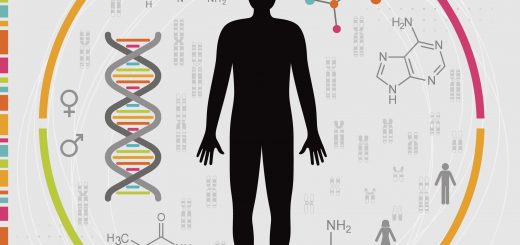Antibiotics and herbicides: Threats behind miracles

The first antibiotic, penicillin, was discovered in 1928 but only mass-produced in the 40s during World War II. It was described by many as the “miracle cure”, saving millions of lives during the war and later on in medical practice. Around the same time, the first herbicide was also discovered and described as a “miracle to fight weeds.”
Both classes of chemicals have revolutionized health and agriculture. However, these two, once so-called miracles, now pose a devastating threat to public health and food security. These dangers result from the same biological phenomenon – evolution.
Both bacteria and weeds are capable of adapting to specific environments through evolution. Whilst this doesn’t occur overnight, this process doesn’t take decades as it does in other organisms. Therefore, when bacteria and weeds are continuously exposed to antibiotics and herbicides, they slowly start resisting both chemicals. This is known as antibiotic and herbicide resistance.
What is antibiotic resistance?
Antibiotics are very efficient in killing bacteria and, when used properly, can cease infections. Some classes tear bacterial cell walls down, while some others prevent bacteria from multiplying. However, some bacteria are able to resist an antibiotic and can then spread this resistance to other bacteria. The next time the same antibiotic is used against said bacteria, they will endure and survive. Consequently, antibiotics stop being as effective as they used to be.
What is herbicide resistance?
When farmers use herbicides, they often spray them across crops to kill invasive species. These unwanted plants are commonly referred to as weeds and can cause massive destruction to crops. By using herbicides, farmers can kill most weeds. However, sometimes, a small number of them survive – showing resistance to the herbicide. If this weed reproduces, it will pass on this resistance to further generations. This means more plants become resistant and, just like antibiotics, herbicides stop being as effective as they used to be1.
Evolution
When a group of individuals are exposed to a threat (in this case, organisms being exposed to antibiotics and herbicides), most perish, yet some survive. The survivors have individual characteristics that enable them to resist threats. Naturally, while other beings die, these stronger ones survive and multiply, increasing the presence of these characteristics in the population. This is natural selection, a key mechanism to evolution, that drives resistance.
Both the environment surrounding bacteria and mutations play a role in evolution. Evolution occurs as a result of changes to bacterial DNA. These changes can happen spontaneously when a mutation occurs. However, bacteria are also able to ‘catch’ DNA from other bacteria through various processes of DNA transfer. This ability to share DNA with each other so quickly, paired with the fact that bacteria multiply fast, makes these organisms exceptional at evolving. This gives bacteria the skills required to resist some antibiotics.
Weeds, the invasive plants, are very similar. Just like bacteria, weeds have a genetic and physiological basis that allows them to evolve easily. Genetically, weeds can undergo mutations that give the plant mechanisms that protect it from a herbicide, causing herbicide resistance. Beyond genetics, some plants are able to reproduce on their own (self-fertilization), making the process of multiplying easier. And others can even spread their seeds by wind, pollen or even animals, allowing them to multiply massively in different areas.
The impact of both problems
A world without antibiotics would mean that health professionals lose the ability to control minor infections. Research suggests that globally, up to 700,000 lives are lost every year due to antibiotic-resistant organisms2. With no further action, this number is expected to increase massively by 2050, when 10 million people may die due to resistant bacteria or parasites. This means antibiotic resistance would become the number one cause of death worldwide – a massive consequence of a massive challenge.
While bacteria threaten lives, weeds pose a severe threat to food availability. Research on herbicide resistance predicts that resistant weeds impact farmers the most, especially when it comes to yield loss. Resistant black-grass, a weed in the UK, is costing around 380 million per year to farmers in England and causing the damage of 820,000 tonnes of wheat every year. David, an arable farmer from Warwickshire who first discovered resistant weeds in his farm in 1994, described the challenge of controlling resistant weeds: “Heavy clay soil and adverse weather make controlling black-grass difficult in some years. Bad years can reduce yields by up to 50%.” Will J Staunton, a farmer from Nottinghamshire, has the same issue in terms of yield loss: “In bad infestations, winter wheat yields can be reduced by 50%, but more commonly reduced by 10 to 15%.”
Besides resistant weeds, these two farmers have something else in common: both have been using non-chemical approaches to tackle resistant weeds, as advised by scientists. One of the most common strategies is crop rotation. When farmers rotate crops, they change the type of crops in the same field. This leads to a variety of species circulating in the same land, diminishing the reliance those plants could have on the same herbicide. “We are using all possible techniques.” said David. However, to Will, the biggest challenge lays on mindsets rather than techniques: “The biggest challenge in dealing with resistant weeds has been changing one’s mindset to really accept major change of farming practices.”
Abandoning herbicides is as tricky as it is to lower antibiotic usage worldwide. Without herbicides, farmers lose profit and experience severe disruptions in production. Without antibiotics, an immense number of medical procedures would be jeopardized. Tackling both antibiotic and herbicide resistance depends on controlling the use of both types of chemicals. And here is where the stories split to follow different paths.
To slow down antibiotic resistance, a broad approach is needed. On the one hand, science needs further funding to come up with new methods to fight bacteria. This would lessen peoples’ reliance on antibiotics. Still, on the other hand, since everyone uses antibiotics, everyone needs to be educated on how to do limit their use. Thus, educating the general public, health professionals, and policymakers is a stepping stone towards stopping antibiotic resistance.
Slowing down herbicide resistance depends more on farmers and policymakers than the public themselves. Farmers must reduce or stop using herbicides completely. Yet, growing tonnes of food without these chemicals is a massive challenge. Hence, preventing the spread of herbicide resistance lays on reformulating farming practices, but also building policies that support farmers financially.
Antibiotics and herbicides were once seen as miracle solutions to fight diseases and improve food production. However, resistance to these chemicals now threatens public health and food availability. While both problems rely on one common mechanism – evolution – a multitude of different approaches must be put in place to slow these problems down. In a world which has been shown to be subjugated by something as small as a virus, bacteria and weeds should not be underestimated.
This article was specialist edited by Emily Armstrong and copy-edited by Ailish McCafferty.
References
- You can read more about this issue here https://sites.google.com/sheffield.ac.uk/thepathofleafresistance/home
- https://amr-review.org/










